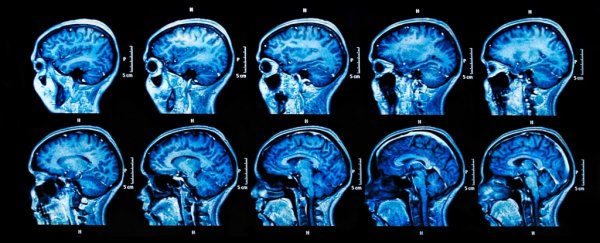Prions are terrifying proteins responsible for a number of devastating, infectious brain diseases - and for the first time, scientists have synthesised an artificial human prion in a lab.
But instead of starting some kind of zombie pandemic, the product of this research could actually help develop treatments for prion diseases.
"This accomplishment represents a watershed," says neurologist Jiri G. Safar of Case Western Reserve School of Medicine.
"Until now our understanding of prions in the brain has been limited. Being able to generate synthetic human prions in a test tube as we have done will enable us to achieve a much richer understanding of prion structure and replication."
And once researchers understand these aspects of prions, they are better equipped to develop the sorts of drugs that can slow these proteins down in the brain, potentially stopping their devastating spread.
Prions are proteins that have gone wrong, folding in abnormal ways. When they bind with normal proteins in the brain, they induce these to fold abnormally too; this cascading effect creates microscopic holes, turning the brain into a sponge.
This unstoppable brain damage causes dementia and loss of bodily control, eventually leading to death. And, as we have seen with mad cow disease, it can also move between other animals and humans.
Prion diseases are rare - only about 300 cases per year are reported in the US - but they often progress rapidly and are currently incurable, making it a particularly scary ailment.
In the past, researchers have managed to engineer rodent prions, but these were not infectious to humans, according to experiments with humanised mice.
And although there's been some success in studying the details of mouse and hamster prion diseases, how these deadly proteins occur in humans is different in both structure and the mechanism of replication.
That's why so far the mis-folding of human prions has remained a mystery - and the failure of recent therapeutic trials for treating prion disease indicates that what works in animal models doesn't always work for humans.
In this latest study, scientists used a genetically engineered human prion protein expressed in E. coli bacteria, and managed to successfully synthesise a "highly destructive" human prion.
They tested it in transgenic mice expressing human prion proteins, and observed neurologic dysfunction, with a neuropathy suggesting a new, particularly toxic human prion strain.
In the process, they discovered that a cell molecule known as Ganglioside GM1 - which helps modulate cell-to-cell signaling - helps trigger infectious replication and the transmission of prion disease.
This discovery means they may be able to develop a medication that inhibits this molecule, blocking prion disease from spreading.
And they also found that the mere presence of mis-folded proteins isn't what causes the severity of a prion disease. Instead, there are particular changes in the amino acid chains of the prion's structure that determine how fast it replicates, how infectious it is, and which brain structures it targets.
"Our findings explain at the structural level the emergence of new human prions and provide a basis for understanding how seemingly subtle differences in mis-folded protein structure and modifications affect their transmissibility, cellular targeting, and thus manifestation in humans," explains Safar.
A new strain of artificially created prion sounds terrifying, but this research could be a bold new step in helping treat prion disease by discovering auxiliary factors, and developing therapeutic approaches to blocking them.
Which, actually, is amazing.
The team's research has been published in Nature Communications.
